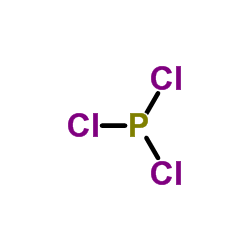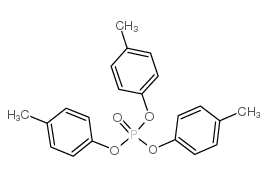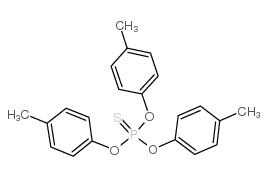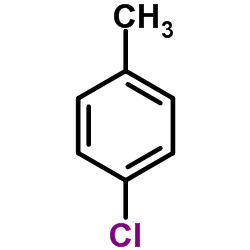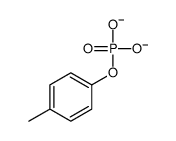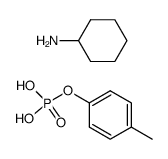620-42-8
| 中文名 | 亚磷酸三对甲苯酯 |
|---|---|
| 英文名 | phosphorous acid tris(4-methylphenyl) ester |
| 中文别名 | 亚磷酸三(4-甲基苯基)酯 |
| 英文别名 |
EINECS 210-639-9
MFCD00041909 Tri-p-tolyl phosphite,tech. tri-p-tolyl phosphite PHOSPHOROUS ACID TRI-P-TOLYL ESTER TRI-P-CRESYL PHOSPHITE |
| 密度 | 1.11 |
|---|---|
| 沸点 | 238ºC (7 mmHg) |
| 熔点 | 52°C |
| 分子式 | C21H21O3P |
| 分子量 | 352.36300 |
| 闪点 | 93ºC |
| 精确质量 | 352.12300 |
| PSA | 41.28000 |
| LogP | 6.37550 |
| 外观性状 | solid |
| 折射率 | 1.5724-1.5744 |
| 储存条件 | 存放在密封容器内,并放在阴凉,干燥处。远离火源。耐腐蚀性区域。 |
| 计算化学 | 1.疏水参数计算参考值(XlogP):6.6 2.氢键供体数量:0 3.氢键受体数量:3 4.可旋转化学键数量:6 5.互变异构体数量:无 6.拓扑分子极性表面积27.7 7.重原子数量:25 8.表面电荷:0 9.复杂度:310 10.同位素原子数量:0 11.确定原子立构中心数量:0 12.不确定原子立构中心数量:0 13.确定化学键立构中心数量:0 14.不确定化学键立构中心数量:0 15.共价键单元数量:1 |
| 更多 | 1. 性状:微黄色或者黄绿色粉末。 2. 密度(g/mL,25/4℃):1.1150 3. 相对蒸汽密度(g/mL,空气=1):未确定 4. 熔点(ºC):238 5. 沸点(ºC,常压):未确定 6. 沸点(ºC,5.2kPa):未确定 7. 折射率:未确定 8. 闪点(ºC):93 9. 比旋光度(º):未确定 10. 自燃点或引燃温度(ºC):未确定 11. 蒸气压(kPa,25ºC):未确定 12. 饱和蒸气压(kPa,60ºC):未确定 13. 燃烧热(KJ/mol):未确定 14. 临界温度(ºC):未确定 15. 临界压力(KPa):未确定 16. 油水(辛醇/水)分配系数的对数值:未确定 17. 爆炸上限(%,V/V):未确定 18. 爆炸下限(%,V/V):未确定 19. 溶解性:于丙酮,乙醇混溶。 |
Synonym:Phosphorous Acid, Tris(4-Methylphenyl) Ester Section 2 - COMPOSITION, INFORMATION ON INGREDIENTS
Risk Phrases: 34 Section 3 - HAZARDS IDENTIFICATION EMERGENCY OVERVIEW
Causes burns.Corrosive. Potential Health Effects Eye: Causes eye burns. May cause chemical conjunctivitis and corneal damage. Skin: Causes skin burns. May cause cyanosis of the extremities. May cause skin rash (in milder cases), and cold and clammy skin with cyanosis or pale color. Ingestion: Causes gastrointestinal tract burns. May cause perforation of the digestive tract. May cause cardiac disturbances. May cause corrosion and permanent tissue destruction of the esophagus and digestive tract. May cause central nervous system effects. May cause systemic effects. Inhalation: Causes chemical burns to the respiratory tract. May cause abdominal pain, nausea, vomiting, and inflammation of the gums and mouth. Aspiration may lead to pulmonary edema. May cause cardiac abnormalities. May cause systemic effects. Inhalation at high concentrations may cause CNS depression and asphixiation. Chronic: Effects may be delayed. Section 4 - FIRST AID MEASURES Eyes: Get medical aid immediately. Do NOT allow victim to rub eyes or keep eyes closed. Extensive irrigation with water is required (at least 30 minutes). Skin: Get medical aid immediately. Immediately flush skin with plenty of water for at least 15 minutes while removing contaminated clothing and shoes. Wash clothing before reuse. Destroy contaminated shoes. Ingestion: Do not induce vomiting. If victim is conscious and alert, give 2-4 cupfuls of milk or water. Never give anything by mouth to an unconscious person. Get medical aid immediately. Wash mouth out with water. Inhalation: Get medical aid immediately. Remove from exposure and move to fresh air immediately. If breathing is difficult, give oxygen. Do NOT use mouth-to-mouth resuscitation. If breathing has ceased apply artificial respiration using oxygen and a suitable mechanical device such as a bag and a mask. Notes to Physician: Section 5 - FIRE FIGHTING MEASURES General Information: As in any fire, wear a self-contained breathing apparatus in pressure-demand, MSHA/NIOSH (approved or equivalent), and full protective gear. During a fire, irritating and highly toxic gases may be generated by thermal decomposition or combustion. Will burn if involved in a fire. Combustible liquid. Can form explosive mixtures at temperatures above the flashpoint. Use water spray to keep fire-exposed containers cool. Combustible liquid. Vapors may be heavier than air. They can spread along the ground and collect in low or confined areas. Containers may explode when heated. Runoff from fire control or dilution water may cause pollution. Extinguishing Media: Use water spray to cool fire-exposed containers. Use water spray, dry chemical, carbon dioxide, or chemical foam. Section 6 - ACCIDENTAL RELEASE MEASURES General Information: Use proper personal protective equipment as indicated in Section 8. Spills/Leaks: Absorb spill with inert material (e.g. vermiculite, sand or earth), then place in suitable container. Avoid runoff into storm sewers and ditches which lead to waterways. Clean up spills immediately, observing precautions in the Protective Equipment section. Remove all sources of ignition. Use a spark-proof tool. Provide ventilation. Section 7 - HANDLING and STORAGE Handling: Wash thoroughly after handling. Use only in a well-ventilated area. Do not breathe dust, vapor, mist, or gas. Do not get in eyes, on skin, or on clothing. Empty containers retain product residue, (liquid and/or vapor), and can be dangerous. Keep container tightly closed. Keep away from heat, sparks and flame. Do not ingest or inhale. Discard contaminated shoes. Do not pressurize, cut, weld, braze, solder, drill, grind, or expose empty containers to heat, sparks or open flames. Storage: Keep away from sources of ignition. Store in a tightly closed container. Store in a cool, dry, well-ventilated area away from incompatible substances. Corrosives area. Section 8 - EXPOSURE CONTROLS, PERSONAL PROTECTION Engineering Controls: Facilities storing or utilizing this material should be equipped with an eyewash facility and a safety shower. Use adequate ventilation to keep airborne concentrations low. Exposure Limits CAS# 620-42-8: Personal Protective Equipment Eyes: Wear appropriate protective eyeglasses or chemical safety goggles as described by OSHA's eye and face protection regulations in 29 CFR 1910.133 or European Standard EN166. Skin: Wear appropriate protective gloves to prevent skin exposure. Clothing: Wear appropriate protective clothing to prevent skin exposure. Respirators: Follow the OSHA respirator regulations found in 29 CFR 1910.134 or European Standard EN 149. Use a NIOSH/MSHA or European Standard EN 149 approved respirator if exposure limits are exceeded or if irritation or other symptoms are experienced. Section 9 - PHYSICAL AND CHEMICAL PROPERTIES Physical State: Clear liquid Color: slightly yellow Odor: Not available. pH: Not available. Vapor Pressure: Not available. Viscosity: Not available. Boiling Point: 238 deg C @ 7.00mmHg Freezing/Melting Point: Not available. Autoignition Temperature: Not available. Flash Point: 93 deg C ( 199.40 deg F) Explosion Limits, lower: Not available. Explosion Limits, upper: Not available. Decomposition Temperature: Solubility in water: miscible with acetone, alcohol, benzene, Specific Gravity/Density: 1.1150g/cm3 Molecular Formula: Molecular Weight: 352.36 Section 10 - STABILITY AND REACTIVITY Chemical Stability: Stable under normal temperatures and pressures. Conditions to Avoid: Incompatible materials, ignition sources, excess heat. Incompatibilities with Other Materials: Oxidizing agents Hazardous Decomposition Products: Carbon monoxide, oxides of phosphorus, irritating and toxic fumes and gases, carbon dioxide. Hazardous Polymerization: Will not occur. Section 11 - TOXICOLOGICAL INFORMATION RTECS#: CAS# 620-42-8: TH1100000 LD50/LC50: Not available. Carcinogenicity: Tri-P-Tolyl Phosphite - Not listed by ACGIH, IARC, or NTP. Other: See actual entry in RTECS for complete information. Section 12 - ECOLOGICAL INFORMATION Ecotoxicity: Fish: Pseudomonas putida: Section 13 - DISPOSAL CONSIDERATIONS Dispose of in a manner consistent with federal, state, and local regulations. Section 14 - TRANSPORT INFORMATION IATA Shipping Name: CORROSIVE LIQUID, N.O.S.* Hazard Class: 8 UN Number: 1760 Packing Group: III IMO Shipping Name: CORROSIVE LIQUID, N.O.S. Hazard Class: 8 UN Number: 1760 Packing Group: III RID/ADR Shipping Name: CORROSIVE LIQUID, N.O.S. Hazard Class: 8 UN Number: 1760 Packing group: III Section 15 - REGULATORY INFORMATION European/International Regulations European Labeling in Accordance with EC Directives Hazard Symbols: C Risk Phrases: R 34 Causes burns. Safety Phrases: S 25 Avoid contact with eyes. S 36/37/39 Wear suitable protective clothing, gloves and eye/face protection. S 45 In case of accident or if you feel unwell, seek medical advice immediately (show the label where possible). WGK (Water Danger/Protection) CAS# 620-42-8: No information available. Canada CAS# 620-42-8 is listed on Canada's NDSL List. CAS# 620-42-8 is not listed on Canada's Ingredient Disclosure List. US FEDERAL TSCA CAS# 620-42-8 is listed on the TSCA inventory. SECTION 16 - ADDITIONAL INFORMATION N/A |
|
毒理学数据: 1、急性毒性:大鼠(皮下)LD50: 3mg/kg 猫(皮下)LD50: 200mg/kg 由于食盐的LD50是3,000 mg/kg,BPA的急性毒性程度与食盐同。 CHEMICAL IDENTIFICATION
HEALTH HAZARD DATAACUTE TOXICITY DATA
|
| 危害码 (欧洲) | C |
|---|---|
| 风险声明 (欧洲) | 34 |
| 安全声明 (欧洲) | S25;S45;S36/S37/S39 |
| RTECS号 | TH1100000 |
| 海关编码 | 2920901900 |
|
~90% 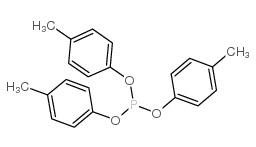
620-42-8 |
| 文献:Ho, Chun-Yu; Chan, Chun-Wa; Wo, Siu-Kwan; Zuo, Zhong; Chan, Lai-Ying Organic and Biomolecular Chemistry, 2010 , vol. 8, # 15 p. 3480 - 3487 |
|
~57% 
620-42-8 |
| 文献:Ivanov, B. E.; Badeeva, E. K.; Krokhina, S. S. Bulletin of the Academy of Sciences of the USSR, Division of Chemical Science (English Translation), 1988 , vol. 37, # 11 p. 2371 - 2373 Izvestiya Akademii Nauk SSSR, Seriya Khimicheskaya, 1988 , # 11 p. 2632 - 2634 |
|
~% 
620-42-8 |
| 文献:Chemische Berichte, , vol. 31, p. 1051 |
| 上游产品 3 | |
|---|---|
| 下游产品 7 | |
| 海关编码 | 2920901900 |
|---|---|
| 中文概述 | 2920901900 亚磷酸酯。监管条件:无。增值税率:17.0%。退税率:9.0%。最惠国关税:6.5%。普通关税:30.0% |
| 申报要素 | 品名, 成分含量, 用途 |
| Summary | 2920901900 VAT:17.0% Tax rebate rate:9.0% Supervision conditions:none MFN tariff:6.5% General tariff:30.0% |




